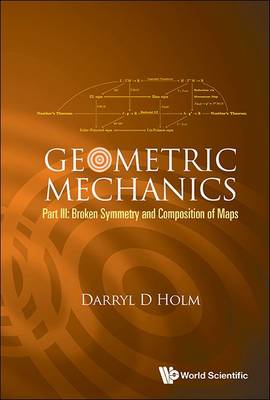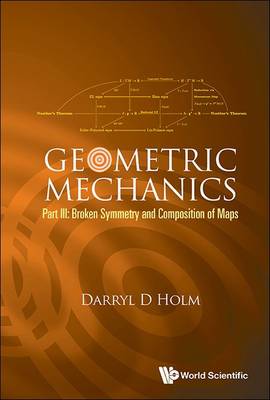
- Afhalen na 1 uur in een winkel met voorraad
- Gratis thuislevering in België vanaf € 30
- Ruim aanbod met 7 miljoen producten
- Afhalen na 1 uur in een winkel met voorraad
- Gratis thuislevering in België vanaf € 30
- Ruim aanbod met 7 miljoen producten
Zoeken
Geometric Mechanics - Part III: Broken Symmetry and Composition of Maps
Darryl D Holm
Hardcover | Engels
€ 225,95
+ 451 punten
Uitvoering
Omschrijving
Geometric Mechanics: Part III is a textbook presented in a lecture notes format, providing precise definitions and practical examples across a series of 31 lectures that have been developed from the author's extensive experience of teaching and research. Geometric mechanics is an incredibly rich field of study: beyond its mathematical depth and beauty, it provides a robust framework for exploring the geometric structures underpinning many dynamical systems crucial to physics.The first part introduces undergraduate mathematics and physics students to the applications of geometric mechanics in finite dimensional dynamical systems of ordinary differential equations. The second part covers the essential theory of manifolds and Lie groups to prepare senior undergraduates and graduate students for the modern applications of geometric mechanics. These applications are introduced in the third part, which delves into the geometric mechanics of partial differential equations that govern the dynamics of ideal continuum mechanics, including fluids and plasmas, at the cutting edge of current research.This textbook is designed to facilitate both course learning and individual study. With focused notes, numerous examples, and nearly 200 exercises, it serves as a valuable resource for postgraduate students, course instructors, and researchers.
Specificaties
Betrokkenen
- Auteur(s):
- Uitgeverij:
Inhoud
- Aantal bladzijden:
- 500
- Taal:
- Engels
Eigenschappen
- Productcode (EAN):
- 9781800616592
- Verschijningsdatum:
- 15/08/2025
- Uitvoering:
- Hardcover
- Formaat:
- Genaaid
- Afmetingen:
- 152 mm x 229 mm
- Gewicht:
- 830 g

Alleen bij Standaard Boekhandel
+ 451 punten op je klantenkaart van Standaard Boekhandel
Beoordelingen
We publiceren alleen reviews die voldoen aan de voorwaarden voor reviews. Bekijk onze voorwaarden voor reviews.








